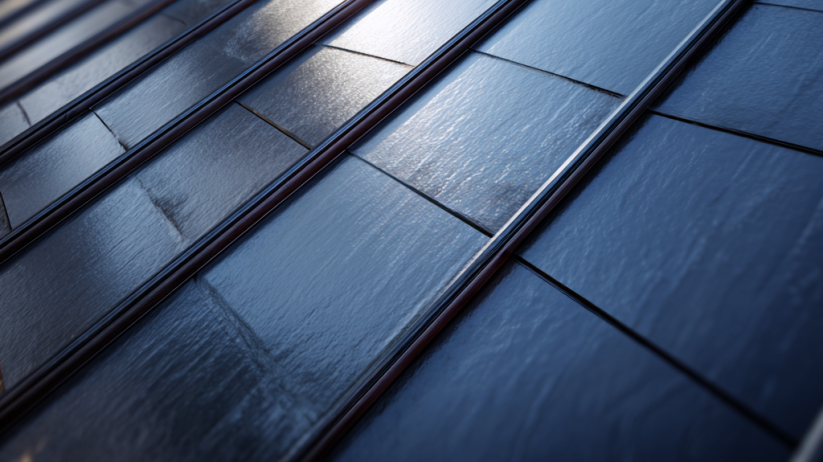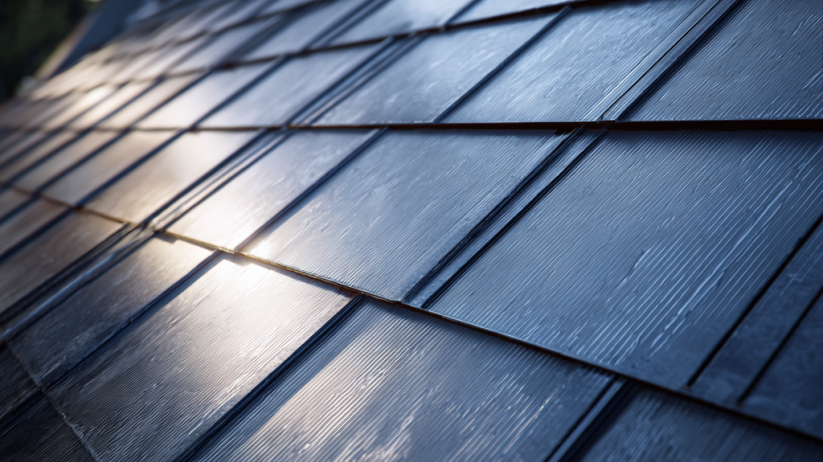Thinking About Solar Shingles? Here’s What Illinois Homeowners Should Know
If you live in Illinois and you’ve spotted a sleek solar roof in your neighborhood, you’re probably wondering: Are solar shingles really worth it?
Maybe you’re due for a new roof, building a home, or just tired of rising electric bills. Either way, solar shingles are catching attention, and not just for their curb appeal. They generate clean energy and protect your home, all while looking like a traditional roof.
In this guide, you’ll learn:
- The pros and cons of solar tiles compared to panels
- How solar shingles work and what they cost
- What Illinois solar roofing incentives are available
- Whether they’re the right fit for your roof and lifestyle
If you’re curious about solar but want something seamless, then trust the experts at Quality Construction Advantage Group to help you out.

Breaking Down Solar Shingles: What They Are and How They Work
Solar shingles, also called solar tiles, look like regular roofing materials but generate electricity just like solar panels.
Each tile contains photovoltaic (PV) cells that capture sunlight and convert it to usable power. They serve as both your roof covering and your solar energy system.
There are two main types:
- Thin-film (CIGS): Lightweight and flexible, but lower in efficiency
- Silicon-based: More efficient, but heavier and pricier
Solar shingles typically produce 13–80 watts per tile, depending on the brand. They’re installed flush with the roof, which means a sleeker look but less flexibility in sun exposure angles compared to panels.
Important Factors to Consider Before Choosing Solar Shingles
Before you dive into Illinois solar roofing upgrades, keep these key decision points in mind.
Roof Condition
Need a new roof anyway?
Most solar shingles require a full roof replacement. If your roof’s aging, this could be a smart 2-in-1 upgrade.
Sunlight Exposure
Is your roof sun-friendly?
South- and west-facing slopes work best. Since shingles lay flat, they can’t be angled like panels for max efficiency.
Budget
What’s realistic for you right now?
Expect to invest between $35,000–$75,000. Federal tax credits (30%) and Illinois incentives can help offset that. So, while solar can save you money, it’s important to consider the upfront costs.
Efficiency Goals
Want to power your whole house?
Solar shingles are less efficient than panels, so you might need more surface area, or a hybrid setup, to reach full offset.
Qualified Installers
Do they know roofing and solar?
Solar shingles are still niche. Work with experienced pros who understand both roofing systems and solar tech.
Let’s compare both sides of the coin:
Pros and Cons of Solar Shingles
| Pros | Cons |
|---|---|
| Sleek, modern look | More expensive than solar panels |
| Functions as both roof + solar | Less efficient (watt-for-watt) |
| Increases curb appeal + value | Often requires full roof replacement |
| Qualifies for tax incentives | Fewer local contractors with experience |
| Low maintenance once installed | Not ideal for shaded or steeply pitched roofs |
Solar shingles are ideal if you:
- Need a roof replacement anyway
- Live in an HOA with solar panel restrictions
- Prioritize aesthetics over maximum efficiency
Solar Shingles vs. Solar Panels: What’s the Difference?
| Feature | Solar Shingles | Traditional Solar Panels |
|---|---|---|
| Cost | $35,000–$75,000+ | $15,000–$25,000+ |
| Efficiency | 13–80 watts per shingle | 300–400+ watts per panel |
| Lifespan | 20–30 years | 25–40 years |
| Install Time | 1–2 weeks | 1–3 days |
| Aesthetics | Flush, integrated look | Raised, visible appearance |
Illinois Solar Roofing Considerations
Here’s what to expect when installing solar shingles in Illinois:
- Local Incentives: Programs like Illinois Shines and SREC credits can bring down costs.
- Snow Performance: Shingles shed snow well when installed properly, but attic insulation and ventilation are key.
- Design Restrictions: Many HOAs prefer solar shingles over bulky panels.
- Net Metering: Most utilities in Illinois still support net metering, but check before you commit.

Solar Shingles FAQs for Illinois Homeowners
Are Solar Shingles More Expensive Than Traditional Solar Panels?
Yes, solar shingles generally cost more upfront than solar panels. While panels can range from $15,000–$25,000, solar shingles typically fall between $35,000 and $75,000. However, if you need a new roof anyway, solar shingles may make more sense as a bundled investment.
How Long Do Solar Shingles Last?
Most solar shingles last 20 to 30 years, depending on the brand and the installer. Some brands, like Tesla or Luma Solar, offer 25-year warranties on both power output and product performance, giving homeowners peace of mind.
Do Solar Shingles Qualify for Tax Credits in Illinois?
Yes. Solar shingles are eligible for the 30% federal solar tax credit. In Illinois, you may also qualify for SREC programs and Illinois Shines, which can significantly lower the overall cost of your installation.
Are Solar Shingles a Good Choice for Illinois Winters?
They can be. Solar shingles are built to withstand snow, hail, and high winds, and they shed snow efficiently if installed properly. However, insulation and attic ventilation are key to avoiding ice dams, just like with any roofing material.
What’s the Efficiency of Solar Shingles Compared to Panels?
Solar shingles are typically less efficient than traditional solar panels. While panels often generate 300–400+ watts each, shingles produce around 13–80 watts per tile. This means you’ll need more surface area to produce the same amount of energy.
Are Solar Shingles Right for You?
If you’re after clean energy and curb appeal, solar shingles might be exactly what you’re looking for, especially if you already need a new roof.
That said, they’re not the most efficient or affordable path to solar for everyone. If your budget is tight or your roof gets limited sun, traditional panels may be the better call.
Want help deciding? Let’s take a look at your roof together and see what makes the most sense.
Schedule your free inspection, no pressure, just honest advice from your trusted local roofing experts.



